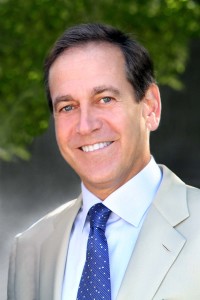NEW YORK & GREENWICH, Conn. (PRWEB) December 18, 2017
What’s the newest, most effective approach for repairing a high-energy neck fracture in a 36-year-old Motocross athlete, diagnosing and treating a 42-year-old tennis player who hears a “crack” from the leg during a match, or treating an anterior cruciate ligament (ACL) injury in a former professional ballet dancer? asks orthopaedic surgeon, Kevin D. Plancher, M.D., M.P.H.
These are a sampling of questions pondered by some 1,000 orthopedic surgeons, physician specialists, nurses, physician assistants, therapists and athletic trainers who attended the international Orthopaedic Summit 2017Evolving Techniques, says Dr. Plancher, chair of this year’s conference.
Dr. Plancher is a leading sports medicine specialist, who specializes in treating ACL tears and shoulder injuries is the founder of Plancher Orthopaedics & Sports Medicine, the Chairman of the Orthopaedic Foundation, a not-for-profit organization that improves quality of life through cutting edge research and education for the prevention and treatment of musculoskeletal diseases, and a clinical professor of orthopaedics at Albert Einstein College of Medicine in New York.
With a focus on the latest, cutting-edge techniques in joint replacement (arthroplasty) and arthroscopy and sports medicine of the knee, shoulder, hip, spine and foot and ankle, the Orthopaedic Summit featured a renowned faculty of presenters and discussion leaders from throughout the United States and several foreign nations, including Brazil, Canada, Germany, the Netherlands,Portugal, the Middle East and Asia. The annual program was held at the Bellagio Hotel, Dec. 6-9.
“Most satisfying is that this year’s Orthopaedic Summit took place at a time of tremendous advances and innovations in joint imaging, treatment and therapy,” Dr. Plancher says.
He is referring to recent orthopaedic studies, such as the first human trials of a “living bandage” of stem cells, harvested from a patient’s bone marrow, to repair meniscal tears in the knee – injuries common in contact sports – without surgery and the use of anti-gravity treadmills in the rehabilitation of knee-injured patients.
“The published results of much of the latest research were raised during participants’ discussions of optimal approaches to treating patients who have joint restrictions or problems or suffer fractures and soft-tissue injuries that cause pain and impact movement,” Dr. Plancher says.
One of the presentations at this year’s Orthopaedic Summit, “The Effect of Smoking and Ketoralac (anti-inflammatory drug) on Spinal Surgery,” helped broaden discussion of how tobacco use can impact a patient’s orthopedic treatment and recovery. Scientists report in the just-published January 2018 issue of the Journal of Shoulder and Elbow Injury that smokers experience greater postoperative pain and use of painkillers than do non-tobacco users following total shoulder joint replacement, Dr. Plancher indicates.
Besides debating best techniques for repairing a variety of orthopedic injuries caused by sports, trauma and degenerative diseases, Orthopaedic Summit participants learned more about latest advances and technologies, including:
Subchondroplasty for bone marrow lesions, including lesions in early stages of osteoarthritis. The technique involves injection of a bone substitute material to fill defects in subchondral bone – bone that lies just below the cartilage in a joint.
Musculoskeletal ultrasound, which researchers say can be applied as therapy for alleviating symptoms of what was once untreatable pain in the soft tissue enveloped by the fasciae (the fibrous, connective tissue) and could potentially prove useful in the future for ultrasound-guided joint surgery.
Innovations in joint preservation, treatment of arm and leg fractures, microfracture repair, cartilage surgery, knee cartilage and biologics, meniscal tears and transplantation, rehabilitation following joint surgery, advances in shoulder surgery, even care of ankle sprains and bunions.
“The Orthopaedic Summit gave participants an opportunity to network, build important relationships with colleagues and discuss the latest information on emerging trends and new technologies in orthopedics,” says Dr. Plancher, who is founding member for the Educational Enhancement Fund of the American Academy of Orthopaedic Surgeons. Working with Dr. Plancher as conference vice chair was Brian D. Busconi, M.D., chief of sports medicine and arthroscopy at the University of Massachusetts Memorial Hospital.
Kevin D. Plancher, MD, MPH, is a board-certified orthopaedic surgeon and the founder of Plancher Orthopaedics & Sports Medicine.
Plancher Orthopaedics & Sports Medicine is a comprehensive orthopaedics and sports medicine practice with offices in New York City and Greenwich, CT. http://www.plancherortho.com

